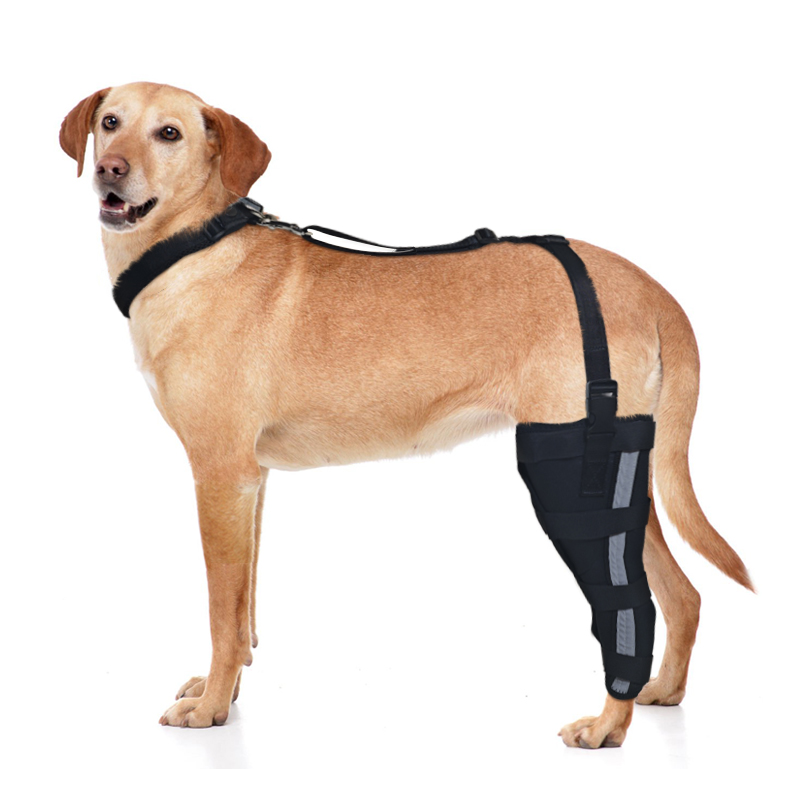When a dog injures its knee, especially the anterior cruciate ligament (ACL), it can be a challenging time for both the pet and its owner. The ACL, a critical ligament in the dog's knee, helps stabilize the joint during movement. Injuries to this ligament are common, particularly in active dogs, and can lead to limping, pain, and even long-term mobility issues if not addressed properly.
Understanding Canine ACL Injuries
An ACL injury in dogs is similar to the injury in humans. It often occurs when a dog suddenly stops or changes direction while running, causing a partial or complete tear of the ligament. Symptoms may include:
- Limping or favoring one leg
- Stiffness, especially after rest
- Swelling around the knee joint
- Pain or discomfort during movement
For a pet owner, seeing these signs can be alarming. Surgery is often recommended, but it's natural to wonder if there are non-surgical options to help your dog recover.
Can a Dog's ACL Heal on Its Own?
While some minor ACL injuries may improve with rest and supportive care, a complete recovery without surgery is less likely. However, not all dogs require surgery for their ACL injury. Factors like the severity of the tear, the dog’s age, weight, overall health, and activity level play significant roles in deciding the best treatment.
For many dogs, conservative management may be a viable option. This approach focuses on non-surgical methods, such as:
- Rest and Restricted Activity: Limiting your dog’s movement for several weeks to prevent further damage and allow natural healing.
- Weight Management: Keeping your dog at a healthy weight to reduce pressure on the injured knee.
- Physical Therapy: Exercises to strengthen the muscles around the knee and improve stability.
- Pain Management: Medications or supplements to reduce pain and inflammation.
The Role of a Dog Knee Brace in Recovery
One of the most effective non-surgical interventions for ACL injuries is using a dog knee brace. A knee brace can provide essential support to the injured leg, reducing strain on the ligament and promoting healing.
A dog knee brace for ACL injury helps stabilize the knee joint, restricts harmful movements, and distributes the load more evenly across the leg. This can be especially beneficial for dogs with partial ACL tears or those not suitable for surgery due to age or health reasons.
A properly fitted dog knee brace can also prevent further injury, allowing the dog to maintain some level of activity while the knee heals. This is crucial for maintaining muscle strength and overall fitness, which supports long-term joint health.
Choosing the Right Knee Brace for Your Dog
When selecting a knee brace for dogs ACL, it’s important to consider the following factors:
- Size and Fit: Ensure the brace fits snugly around your dog’s knee and provides adequate support.
- Material: Look for a brace made from durable, comfortable materials that won’t irritate your dog’s skin.
- Support Level: Depending on the severity of the injury, you may need a brace with different levels of support, such as a dog knee brace for a torn ACL that provides more stability.
Monitoring Your Dog's Progress
If you choose to manage your dog's ACL injury without surgery, regular check-ups with your veterinarian are essential. They can monitor your dog's progress, adjust treatment plans as needed, and ensure the knee is healing properly. Pay close attention to any signs of worsening, such as increased limping or pain, which could indicate that surgery may still be necessary.
Conclusion
While some dogs may heal from an ACL injury without surgery, this approach requires careful management and commitment. Using a dog knee brace can significantly enhance the recovery process by providing the necessary support and stability to the injured joint. Combined with rest, weight management, and physical therapy, it is possible for many dogs to regain their mobility and enjoy a happy, active life once again.
If you’re considering a non-surgical route for your dog’s ACL injury, consult with your veterinarian to create a tailored plan. With the right care, your dog can get back on its paws in no time!



0 Comments